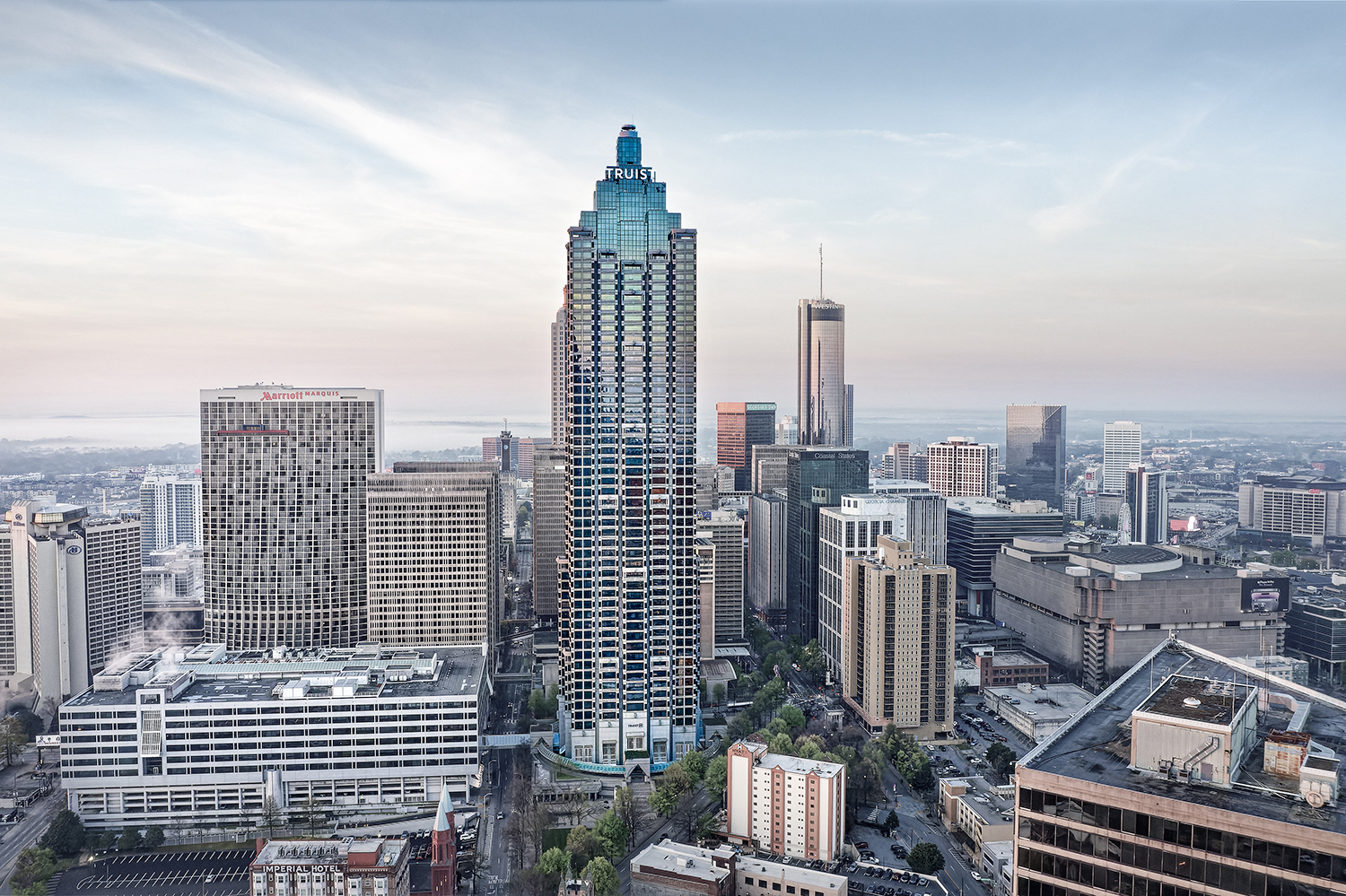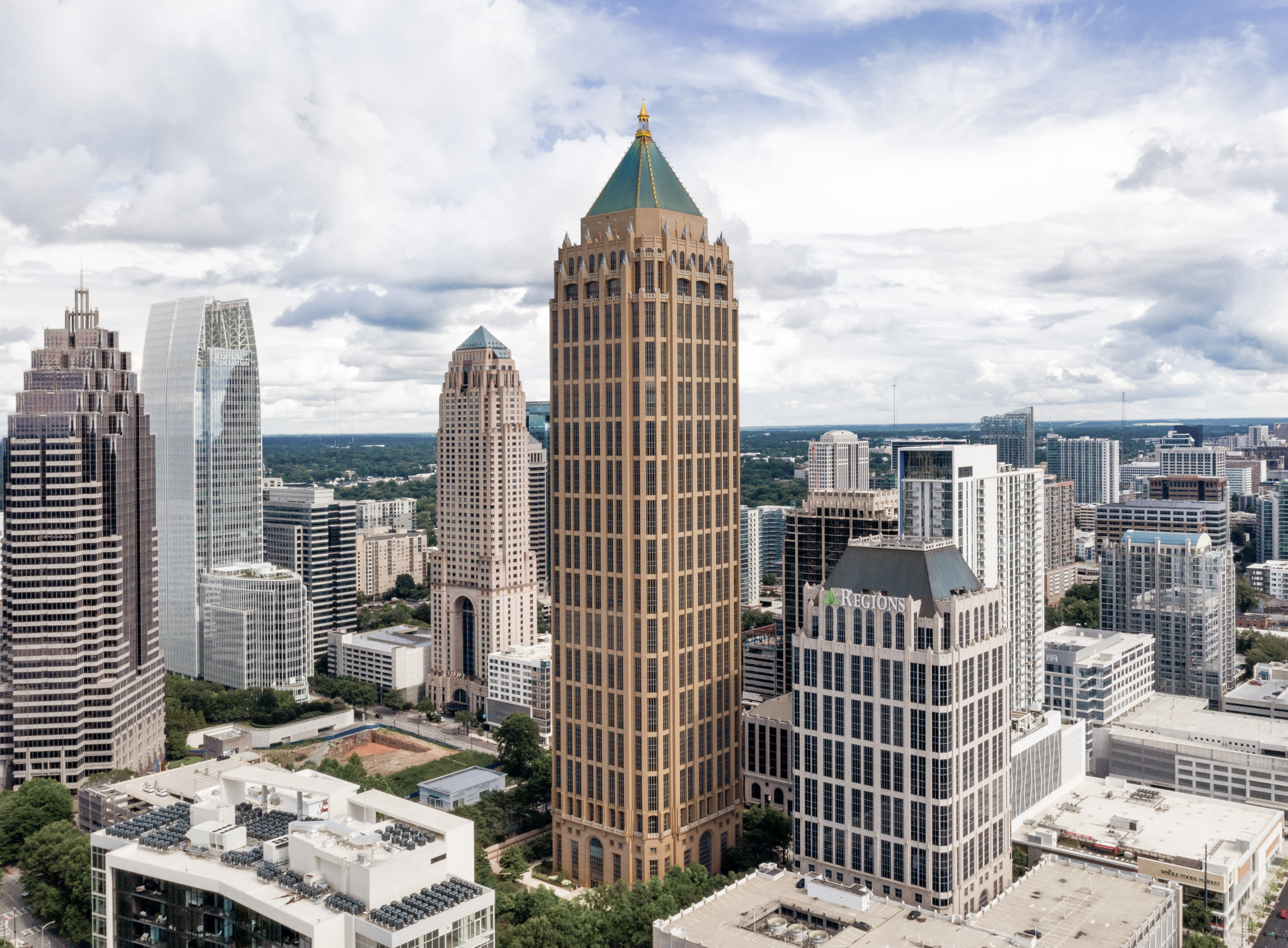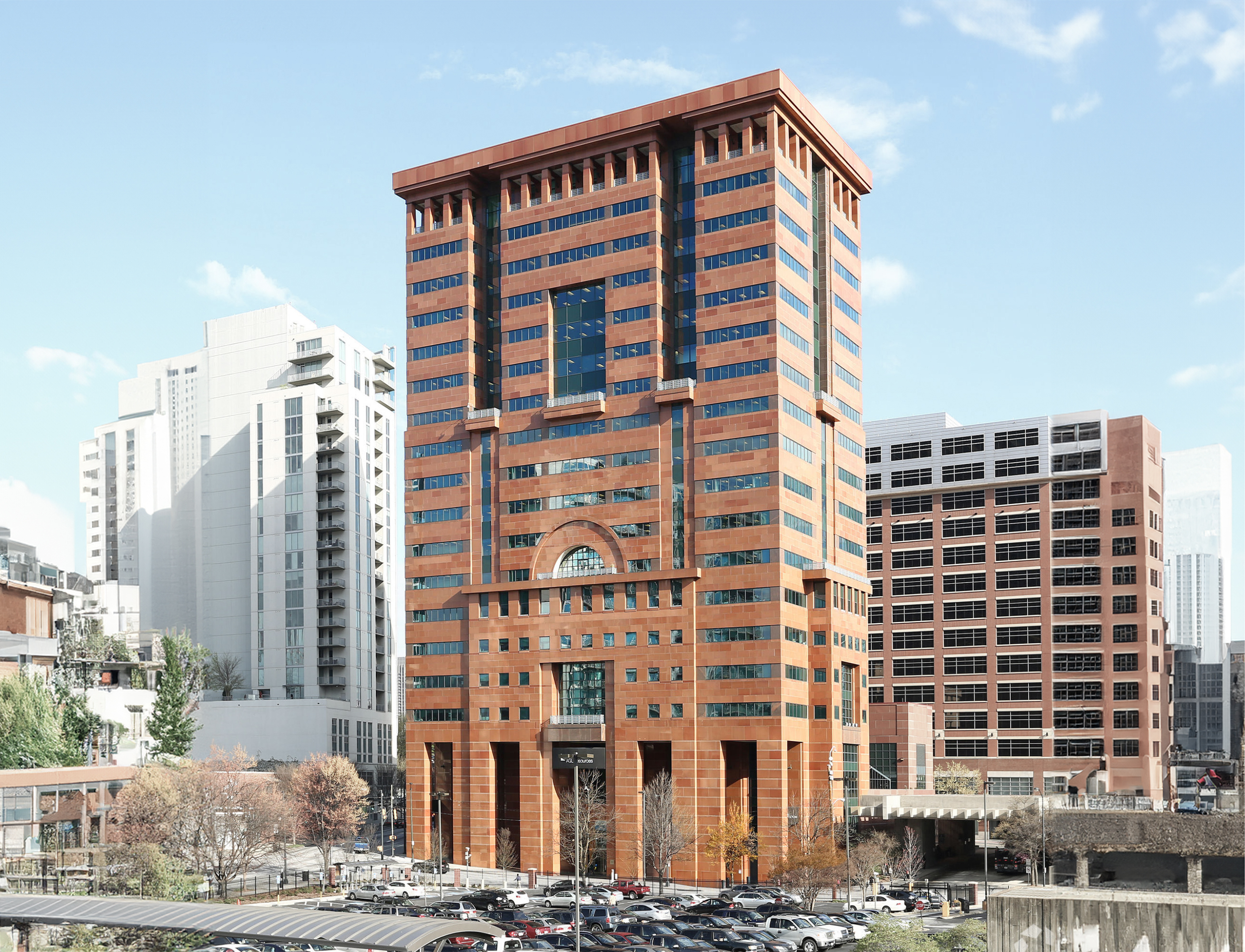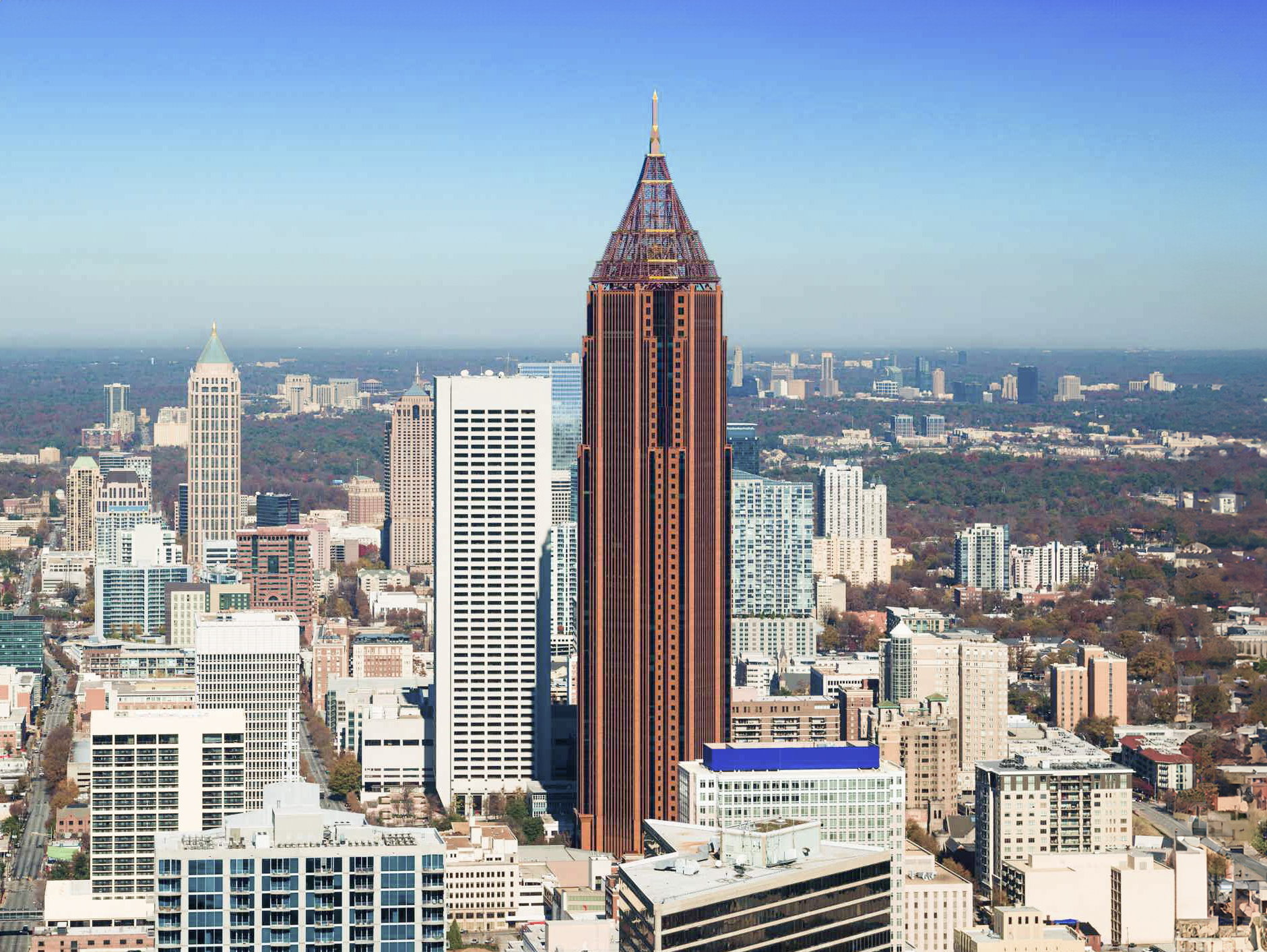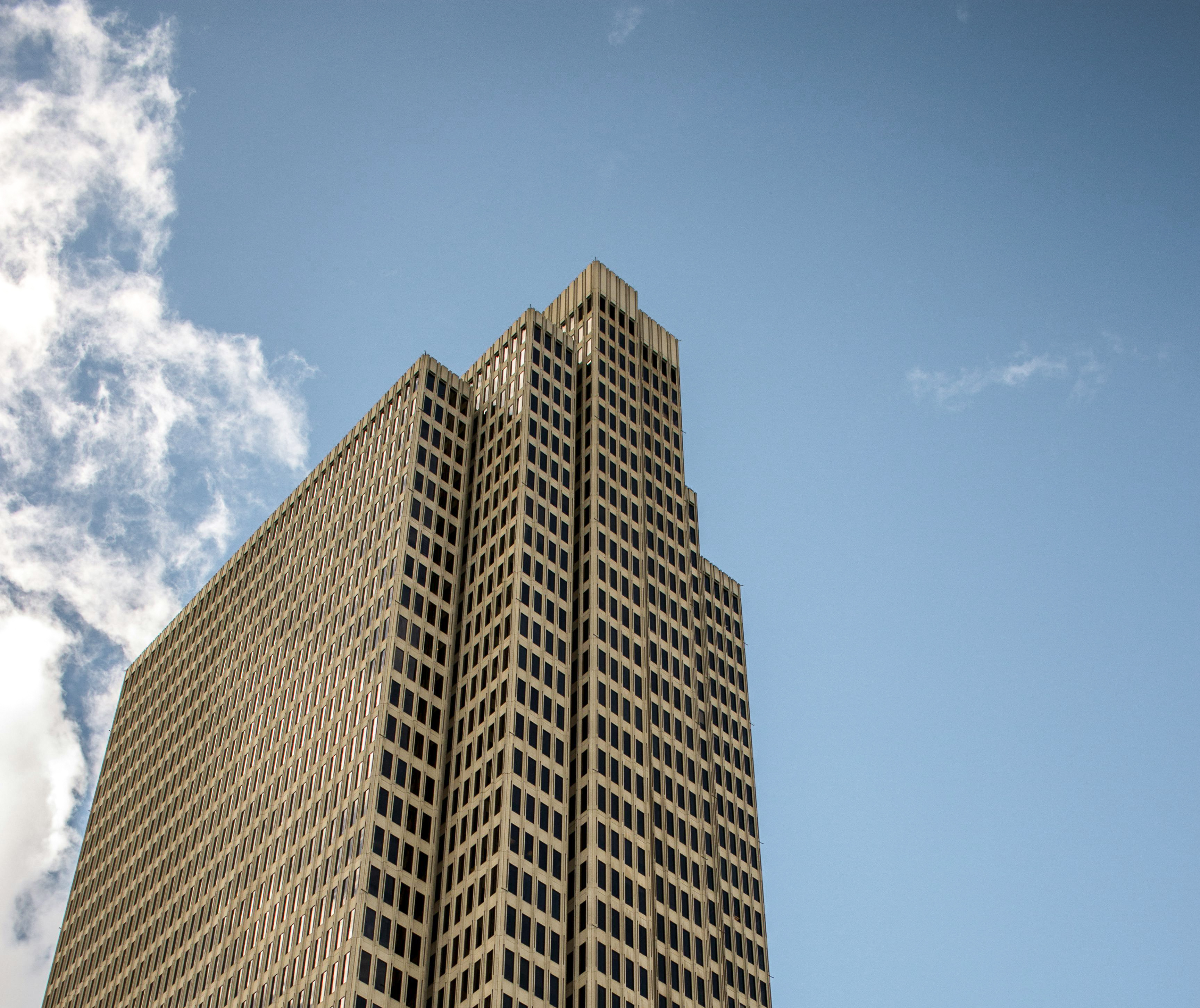The Truist Plaza Building is a Postmodernist skyscraper designed in 1987 by John Portman & Associates, and built between 1989 and 1992 in Atlanta, GA.
Truist Plaza Building is not the only name you might know this building by though. It is common for companies to want to attach their names to iconic buildings when they move in, or for the general public to come up with nicknames, and this one is no exception. The building has changed names several times over the years, and is also known as:
- One Peachtree Center.
- Peachtree 400.
- SunTrust Plaza between 1995 and 2021.
- Truist Plaza Building from 2021 until this day.
Its precise street address is 303 Peachtree Street NE, Atlanta, GA. You can also find it on the map here.
In 2004 the Truist Plaza Building was awarded with the Office Building of the Year Award (TOBY).
